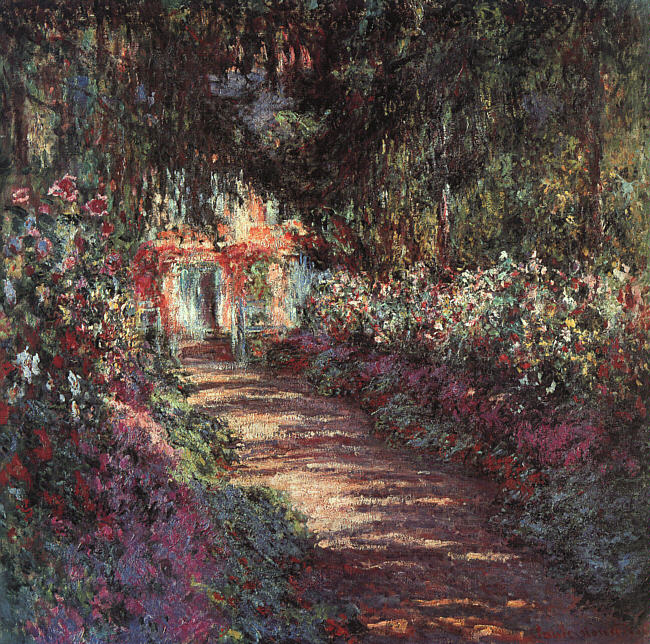 Born and raised in Northern Delaware, I was always a stone’s
throw away from some of the art hubs of the East Coast, like 25 minutes away
from the Philadelphia Mueseum of Art and the about 2 hours away from the Metropolitan
Museum of Art. These were easy for field trip destinations for my schools growing
up and day trips with my mom when I didn’t want to go to school. Whenever the
museums had exhibits of impressionism, specifically of Claude Monet.
Born and raised in Northern Delaware, I was always a stone’s
throw away from some of the art hubs of the East Coast, like 25 minutes away
from the Philadelphia Mueseum of Art and the about 2 hours away from the Metropolitan
Museum of Art. These were easy for field trip destinations for my schools growing
up and day trips with my mom when I didn’t want to go to school. Whenever the
museums had exhibits of impressionism, specifically of Claude Monet.
When I graduated high school, I skipped the normal
ceremonies, took all my savings, and travelled around Europe with my cousin. On
my itinerary was the Museum d’Orsay which houses a rather large selection of
impressionist-era paintings, including works of my favorite childhood painter
Claude Monet.
Patrons of the museum weren’t allowed to photograph anything
inside, and for the first time in a rather hectic vacation of two poor East Coast
girls, one of them freshly tossed into the world and having no idea what to do
with her life, I just sat and looked at the famous paintings that literally
wrapped around the room. I took in the thoughts and colors of a dead painting and
suddenly felt full of life.
With a weekend for attending international cinema movies and
a debate of dead soldiers from WWI, the heaviness of those topics were elevated
when I decided to spend some time writing this post about the tranquility of
Monet’s impressionism the generation before the War to End all Wars. I think that
some of the beauty that came from the impressionism era is that it add beautiful
color to the stark, gray contrast of battlefields, shell-shock, and the carnage
of war. Like my experience in stepping out of the chaos of a busy city in the
quiet of Monet’s gardens, art like impressionism preceded the war in what I can
only hope was a serendipitous therapy offered to the war via nature-art.
Photo Credit: The Garden Way (Public Domain Image via Wikimedia Commons)

What a beautiful experience. It's amazing to know that there are things that make us feel things we don't understand. There are things that bring the world together, even when all that is happening on the surface seems to be tearing it apart.
ReplyDeleteIt's great to hear that in the beginnings of Romanticism's death, there was still true beauty being spread around the world. I think that if more artists tried their hand at Monet's art, the world could seem like a more beautiful place, and perhaps truly be so.
ReplyDeleteI love the idea of impressionism. It was no longer about romanticizing the image or scene itself, but depicting visually the feelings brought by the scene, even if it meant skewing reality. Colors changed, lines blurred, but some how you see it clearer than if you were looking past Monet himself into the garden.
ReplyDeleteI wrote my last post on the art of Turner, a romantic painter. He preceded impressionism in his emotional expression and colorful freedom with light. However, nobody broke ground like the impressionists! They will always be a personal favorite; they're absolute beauty and soul on a canvas.
ReplyDelete